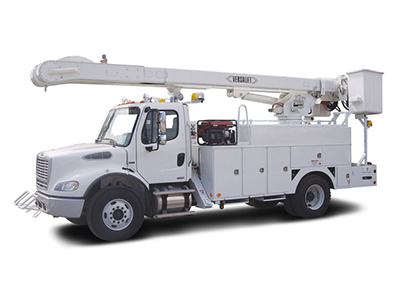
This blog post lays out a number of reasons why any business owner who employs aerial lifts to seek regular and recurring high-voltage dielectric testing. Testing is critical to guaranteeing the safety of your staff, equipment, and the systems you are employed to service. Below we offer you ten aerial lift safety tips:
Tip #1: All Aerial Lift Operators Must Be Trained
Majority of aerial lift accidents are due to human error. Proper training is the best way to prevent mishaps while operating the equipment. Operators must comply with OSHA's requirements and training.
Tip #2: Equipment Inspections Must Be Done Prior Each Shift
Pre-start inspection must be performed before operating an aerial lift. This routine checkup enables operators to detect any potential hazards or defects that may pose threat to safety. The inspection process covers both vehicle and lift components.
Tip #3: Follow Manufacturer’s Instructions When Operating The Lift
The manufacturer's instructions include particular details about the equipment. The weight and height capacities are noted, as well as the limitations that should not be exceeded to prevent untoward incidents while operating the unit.
Tip #4: Never Disregard Safety Devices
Aerial lift safety devices provide protection to operators from pressing the lift beyond its limits and results an accident such as mechanical malfunction or a tip over.
Tip #5: Never Move the Lift with the Platform in High Position
Workers are at risk of falling when they try to move the lift while staying on the platform.
Tip #6: Never Position Aerial Lift Between Overhead Objects and the Bucket
Overhead objects, signs or structures which may get in touch with workers inside the bucket can possibly crush them when the lift is situated too near the object.
Tip #7: Maintain a 10-Feet Distance Between Power Lines and Assume They are Live
Keep at least 10 feet distance between the power lines and the lift. Always assume that these power lines are live even if they are lying in the ground. Rubber gloves, hard hats, and rubber soled shoes are required to be worn within the job vicinity.
Tip #8: Protective Gear Must Be Used At All Times
Aerial lift operators working in raised platforms must wear full body harnesses connected to boom or basket straps. These protective tools prevent workers from being thrown out from the basket and hit the ground. Guardrails are not meant to be used for sitting, standing, climbing or even to support stability. Always check job site safety protocols before beginning work.
Tip #9: Place Aerial Lifts on Stable, Even Ground
Aerial lifts should be situated to stable or even grounds. When it's necessary to place it in an inclined position, make sure to set the brakes and use wedges on the wheels to prevent it from rolling. Outriggers should also be utilized when provided.
Tip #10: Do Not Exceed Aerial Lift’s Load Capacity
Although aerial lifts are extraordinarily capable equipment, they also have limitations. Always refer to manufacturer's instruction manual regarding its weight and height limitations before using it for loading. Be reminded that the weight limitations of the lift also include the tools and other accessories in the bucket besides the workers. Take time to calculate it to ensure worker's safety and prevent tip over accidents.
Lastly, make sure to submit aerial lifts for regular high-voltage dielectric testing to identify any defects and perform necessary repairs in order to prevent it from further decay and deterioration. Contact ETS Inspection and Testing Services for aerial lift testing and repairs.
